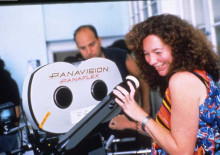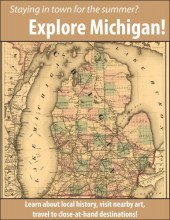Jeffrey Alex Edelstein
Library Blogs
Showing 751 - 760 of 1968 items
•
Design Lab Resident Jeffrey Edelstein discusses his work with adaptive gaming and the many things he learned exploring this topic.
•
Design Lab Resident Jeff Edelstein discusses "co-piloting" a video game with various adaptive gaming setups.

When planning an assessment project in the Library, one important step is to consider whether your project should be vetted by the Institutional Review Board (IRB) at U-M, a committee that ensures studies with human subjects are ethical, that subjects are protected from unnecessary psychological or physical risks, and that subjects are participating in a fully informed, voluntary manner. This post details when your data collection may be subject to a full IRB application and review process.

Join filmmaker Nancy Savoca at a symposium celebrating her career on Friday, May 10. The symposium will include several panels, an exhibit opening, and film screenings.

The concluding volume of Sandra Gulland's trilogy about Empress Josephine tells of her life during the time of Napoleon's empire and portrays her as a woman very much in love with her husband but heartbroken by her inability to conceive a child by him. He begins to listen to his scheming siblings in their plots to get him to divorce her and marry a young princess so he could have an heir to his empire. This trilogy, taken as a whole, is a masterful work of historical fiction.

The May display of Undergraduate Library books in the Shapiro Lobby focuses on exploring the state of Michigan. We have selected books related to local history, culture, and attractions. If you’re staying in town this summer, considering learning more about our state!

Earlier this month, Special Collections was pleased to host WEMU news reporter Jorge Avellan as he researched a story for their "Hidden in Plain Sight" program, featuring Malinda Russell's A Domestic Cook Book. This unpreposessing little 39-page booklet in faded paper wrappers is one of the greatest treasures of the Janice Bluestein Longone Culinary Archive. Published in Paw Paw, Michigan in 1866, A Domestic Cook Book is the only known copy of the oldest known cookbook published by an African American.

What would you do with 500 blank postcards? For contributors to The Alternative Press, the answers varied. Some hand-wrote poetry on their cards. Some made images--by painting, drawing, collaging, or pasting photographs onto paper. Some embraced the postcard format, while others challenged it--for example, Carol Steen made all of her postcards in brass, a playful take on the form you could never actually use them to mail a message to a friend.
•
Design Lab Resident Connor Lockman discusses his work with machine learning and animal classification projects on the Zooniverse platform.
